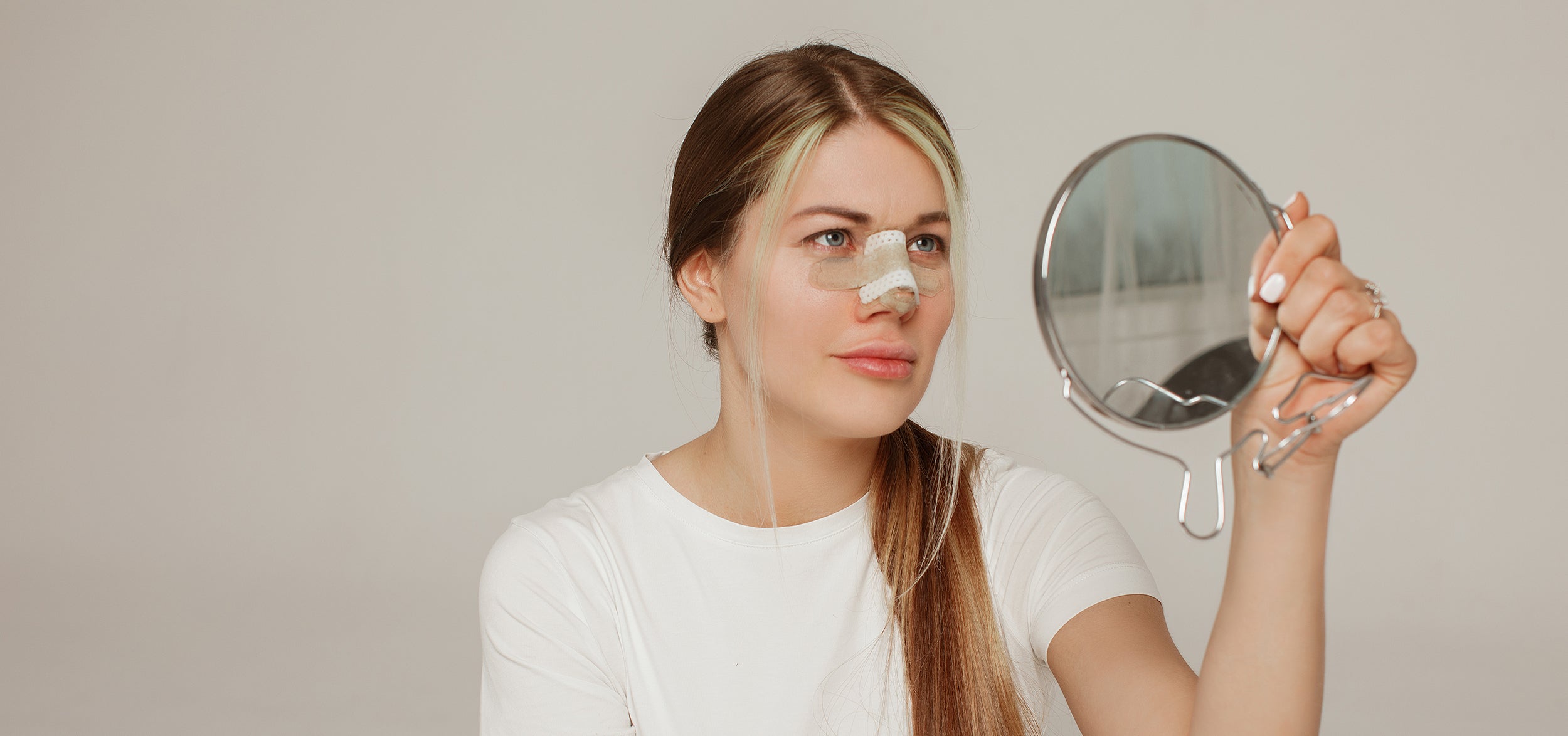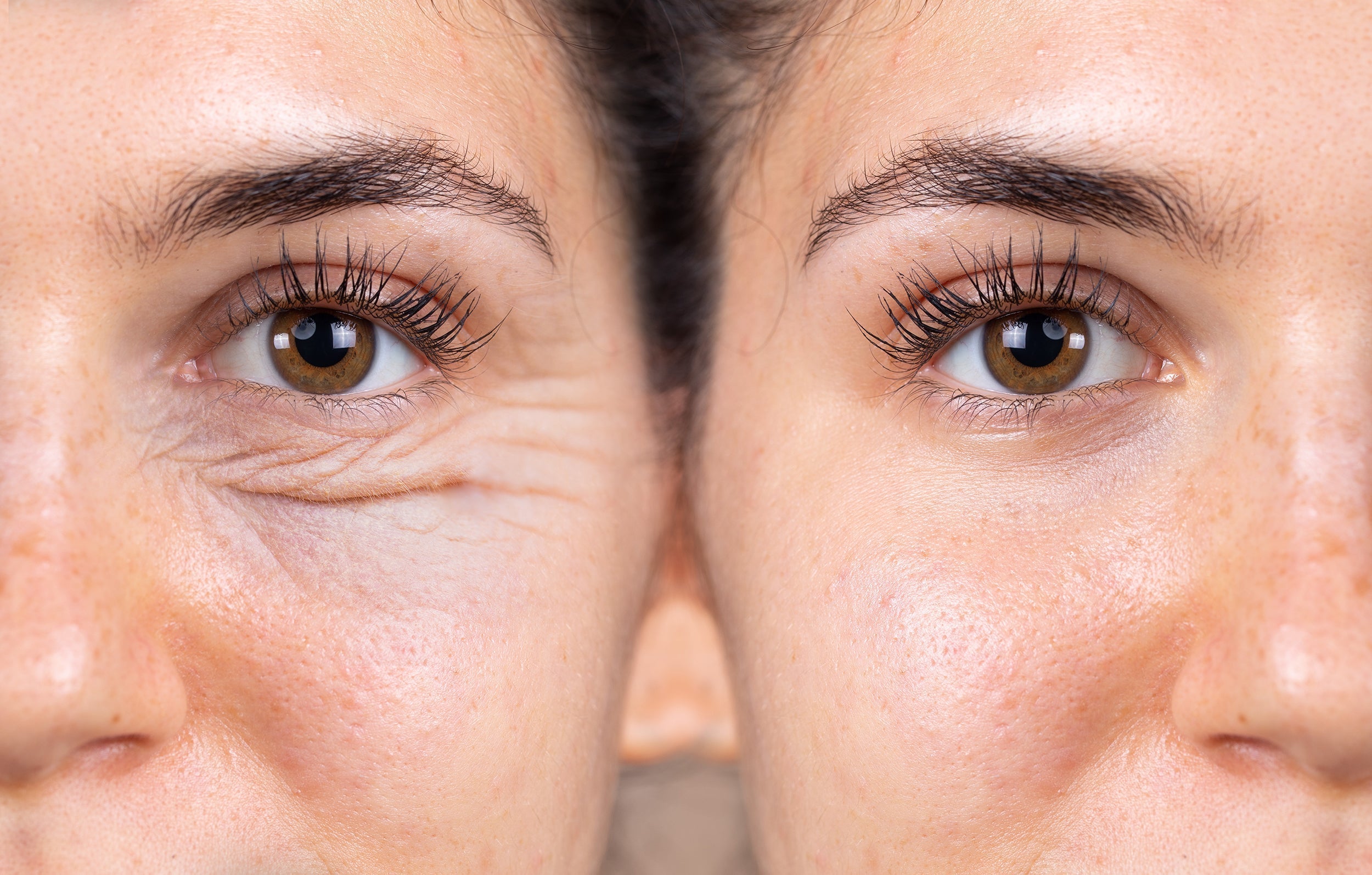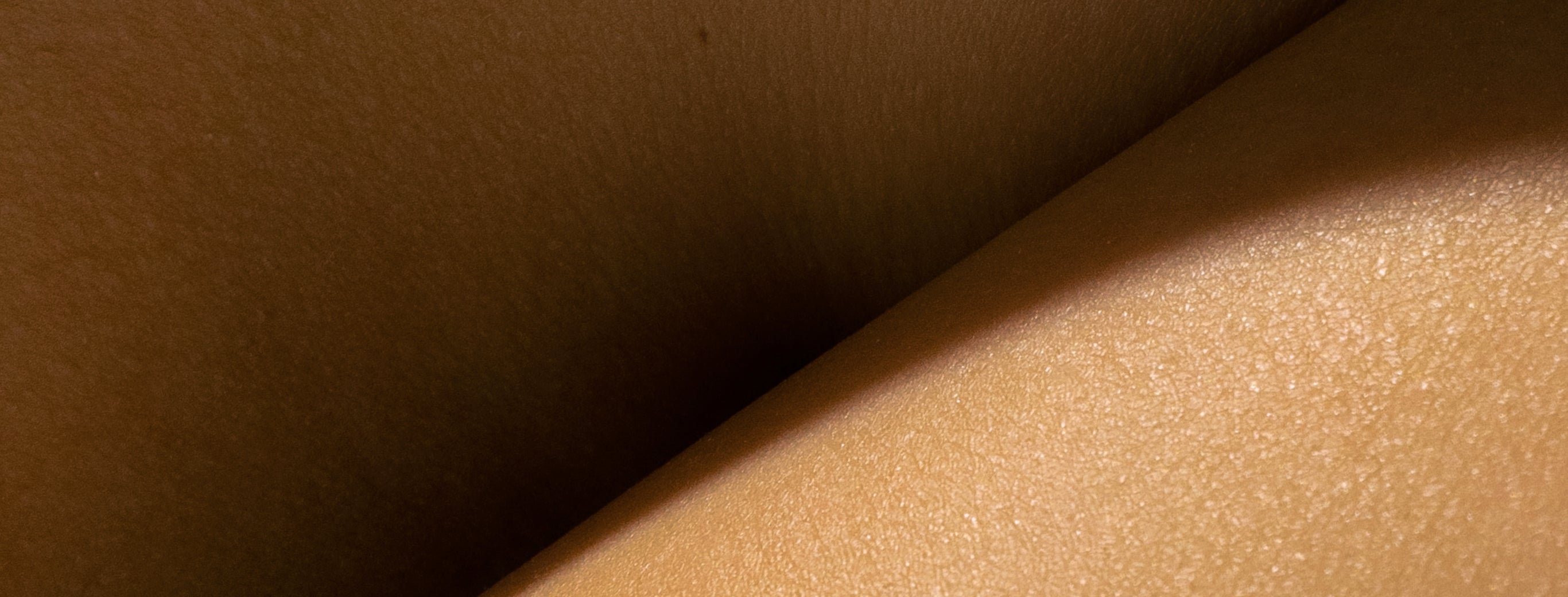Liposuction Bruising: Your Complete Guide to Understanding and Managing Post-Procedure Recovery

You wake up from your liposuction procedure expecting to see sculpted results. Instead, you're greeted by extensive bruising that looks nothing like what you expected. Here's what nobody tells you upfront: dramatic bruising after liposuction is completely normal – it's actually a sign that your body is healing properly.
The reality? Liposuction bruising is more extensive than most people expect, but it's temporary and manageable when you understand what's happening and how to support your body's natural healing process.
This guide covers the science behind post-liposuction bruising, the recovery timeline, and proven strategies to optimize your healing journey.
Understanding Liposuction Bruising: The Science Behind Your Recovery
During liposuction, specialized cannulas gently break up and remove fat cells. This process naturally affects small blood vessels called capillaries, which release blood into surrounding tissues – creating the bruising you see after surgery.
Liposuction bruising tends to be more noticeable than everyday bruising because the procedure covers larger areas and affects deeper tissue layers. Gravity also plays a role, causing blood to travel and appear in unexpected places beyond your actual treatment zones.
Your personal bruising pattern depends on factors like procedure size, treatment areas, skin type, age, and how your body naturally heals. The good news? Bruising follows a predictable timeline: it starts as dark red or purple, then gradually lightens through blue, green, and yellow before completely fading as your body naturally processes and clears everything away.
The Emotional Side of Bruising Recovery
Extensive bruising can be emotionally challenging. Seeing significant discoloration may trigger anxiety or worry, even when you know it's normal.
Common responses include shock at the extent of bruising, anxiety about healing progress, and self-consciousness about appearance.
Healthy coping strategies can include taking progress photos, limiting mirror checks to two times daily, and remembering this phase is temporary.
If anxiety becomes overwhelming, reach out to your surgical team or consider counseling support.
Pre-Surgery Preparation: Minimizing Bruising
Strategic preparation can reduce bruising severity and duration.
2-3 Weeks Before Surgery:
-
Stop blood-thinning supplements (fish oil, vitamin E, garlic, ginkgo biloba)
-
Avoid anti-inflammatory medications unless medically necessary
-
Focus on anti-inflammatory nutrition rich in vitamin C and antioxidants
-
Consider Sulinu's Before + After Vitals for targeted pre- and post-surgical support
-
Quit smoking completely and limit alcohol consumption
1 Week Before Surgery:
-
Prepare recovery supplies: ice packs, comfortable positioning aids
-
Arrange support for the first few days when bruising peaks
-
Take "before" photos to track healing progress
Mental Preparation:
Review realistic timelines (significant improvement over 2-4 weeks, complete resolution by 6-8 weeks) and prepare for initial bruising shock in the first 72 hours.

Reduce Bruising Through Essential Supplementation
Integrate Sulinu’s ground-breaking NutriSurgical supplement, Before + After Vitals, both before and after your liposuction. Here's the reality: 2 out of 3 women are nutrient-depleted after surgery, which directly impacts healing speed, bruising, and swelling resolution. This all-in-one protein and vitamin powder packs 8 pre- and post-surgery essentials into one scoop. Their simple approach: Scoop. Mix. Heal.
What Makes Before + After Vitals Recovery Nutrition Actually Work?
BioEnhanced Vitamin C
Achieves 233% higher retention than standard forms, delivering anti-inflammatory support without digestive upset when your nose needs it most.
Proteolytic Enzymes
Double amino acid absorption from protein, ensuring damaged nasal tissues get the building blocks needed for faster repair and swelling resolution.
Hydrolyzed Collagen
Stimulates your skin to produce more natural collagen, improving tissue elasticity up to 15% in just 4 weeks.
Biome Synbiotics
Survive harsh stomach acids to support gut health disrupted by surgery, reducing inflammation that interferes with healing.
Bruising Management Strategies That Actually Work
Immediate Post-Procedure Protocol (Weeks 1-2)
Ice Application
Apply cold therapy for 15-20 minutes every 2-3 hours. Use frozen peas in a thin towel - they conform perfectly to body contours.
Elevation
Keep treated areas above heart level when possible. This fights gravity and reduces fluid accumulation that worsens bruising appearance.
Gentle Movement
Short, slow walks every few hours prevent blood pooling. Avoid activities that raise heart rate significantly.
Recovery Environment
Create a comfortable space with good lighting, entertainment, and everything within easy reach.
Strategic Nutrition for Bruise Resolution (Weeks 1-2)
Anti-Inflammatory Foods
Prioritize vitamin C-rich foods (citrus, berries, leafy greens), vitamin K sources (spinach, broccoli), and omega-3s (fatty fish, walnuts). Avoid alcohol and excess sodium.
Enhanced Recovery Support
Consider specialized post-surgical supplements designed for cosmetic recovery. Look for formulations with enhanced vitamin C, proteolytic enzymes, and digestive support. Sulinu's Before + After Vitals combines these elements in a single formula designed for surgical healing.
Advanced Healing Support (Weeks 2+)
Professional Lymphatic Drainage
Once surgeon-approved, gentle massage helps process cellular debris more efficiently.
Gentle Heat Therapy
After week one with surgeon approval, warm compresses for 15-20 minutes can improve circulation.
Skin Health
Gentle moisturizing and sun protection support healing processes.
Long-Term Recovery Optimization (Month 1+)
Maintain Consistent Healthy Habits
Even as obvious bruising fades, continuing with anti-inflammatory nutrition and adequate hydration supports the final stages of healing and helps optimize your overall results.
Be Patient with the Process
Resist the urge to judge your results prematurely or compare your bruising timeline to others. Every body heals differently, and trying to speed up the process usually backfires.
The Bruising Recovery Timeline: What to Expect
Days 1-3: The Initial Response
During the first 72 hours, your body creates the most significant bruising you'll experience. Fresh bleeding produces deep purples and reds that can be surprising if you're unprepared.
The bruising often appears worse than it is because fresh blood under skin creates intense coloring. Your body is flooding the area with protective cells and fluids for healing.
Bruising may appear in areas unrelated to treatment zones. Blood follows gravity and tissue planes, so seeing bruising on your thighs after abdominal liposuction is completely normal.
Days 4-7: The Color Evolution
You'll notice color changes as your body processes healing tissues. Deep purples transition toward blue, and intensity starts to soften. Different areas may progress at different rates, which is completely normal.
Days 8-14: The Transition Phase
Week two brings blues and greens across treated areas. While still extensive, these colors feel less intense. This is when patients often start feeling comfortable leaving the house with strategic clothing choices.
Weeks 3-4: The Yellow Phase
Your bruising takes on golden and yellow tones that signal the final stages. Colors become less defined, edges soften, and the appearance becomes less noticeable. Most patients feel comfortable returning to normal activities during this phase.
Month 2+: The Final Resolution
Any remaining discoloration should be subtle and continuing to improve. Most patients find complete resolution by 6-8 weeks post-procedure.
Navigating Social Situations During Recovery
Extensive bruising often raises questions from others. Having prepared responses helps you feel more confident during recovery.
Professional Settings
-
"I had a minor procedure and I'm healing well, thanks for asking."
-
"I'm recovering from surgery - everything went great."
Family and Friends
-
"The bruising looks worse than it feels. My doctor says it's completely normal."
-
"I'm exactly where I should be in my healing timeline."
For Unwanted Questions
-
"I'd rather not discuss medical details, but I appreciate your concern."
-
Simple redirect: "Thanks for asking - how are you doing?"
Preparation Tips
-
Practice responses in advance so they feel natural
-
Remember you don't owe anyone explanations about your medical choices
-
Focus on positive aspects: "I'm healing really well" rather than dwelling on bruising
-
Consider strategic makeup or clothing to minimize visibility if desired
Red Flags: When Your Bruising Needs Professional Attention
Contact your surgeon immediately if you experience:
Rapidly Expanding Bruising
Sudden extensive spreading beyond expected areas
Signs of Infection
Excessive warmth, red streaking, unusual odor, or persistent fever
Severe Asymmetry
Significant differences or sudden pattern changes
Worsening Symptoms
Bruising becoming more intense after initial days
Concerning Pain
Severe pain that worsens rather than improves
Trust your instincts – contact your surgical team if something feels fundamentally different from expectations.
Frequently Asked Questions
How long will my bruising last?
Most patients see significant improvement by 2-3 weeks, with complete resolution by 6-8 weeks. Individual timelines vary based on procedure extent and healing characteristics.
Is bruising in untreated areas normal?
Yes! Gravity causes blood to travel, so bruising commonly appears below treatment areas. This is completely normal.
Can I use makeup to cover bruising?
Once cleared by your surgeon (usually 5-7 days), color-correcting concealer works well. Use green for red areas, orange for blue/purple bruising.
Why does lighting affect how my bruising looks?
Different lighting conditions significantly affect bruising appearance. Fluorescent lighting emphasizes blue/purple tones, while natural lighting is more flattering.
Can I exercise with bruising?
Follow your surgeon's guidelines - typically gentle walking immediately, but restrict strenuous exercise for 2-4 weeks to avoid worsening bruising.
Should I worry about asymmetrical bruising?
Some asymmetry is normal due to positioning and drainage patterns. Contact your surgeon if asymmetry is severe or develops suddenly.
What should I tell people who ask about my bruising?
Prepare simple responses in advance: "I had a minor procedure and I'm healing well" for professional settings, or "The bruising looks worse than it feels - my doctor says it's normal" for closer relationships. Remember, you don't owe anyone detailed explanations about your medical choices.
Medical Disclaimer
This content is provided for educational and informational purposes only and should not be considered a substitute for professional medical advice, diagnosis, or treatment. Liposuction recovery experiences vary significantly among individuals based on factors including procedure extent, individual health status, healing characteristics, and adherence to post-operative care instructions.
The information presented here represents general guidelines and should never replace the specific instructions provided by your plastic surgeon and medical team. Post-operative care protocols can vary significantly between different surgeons, techniques, and patient circumstances. Always prioritize and follow the specific guidelines provided by your surgical team over any general information found online.
If you experience any concerning symptoms during your recovery period – including excessive or worsening bruising, signs of infection, severe pain, or any of the warning signs discussed in this article – contact your surgeon immediately or seek appropriate emergency medical care. Do not delay seeking professional medical evaluation based on information found in this or any other online resource.
The mention of specific products, supplements, treatments, or techniques in this article does not constitute medical advice or professional endorsement. Always consult with your healthcare providers before starting any new supplements, treatments, or significant changes to your recovery routine, as these may interact with prescribed medications or interfere with your healing process.
Before + After Vitals
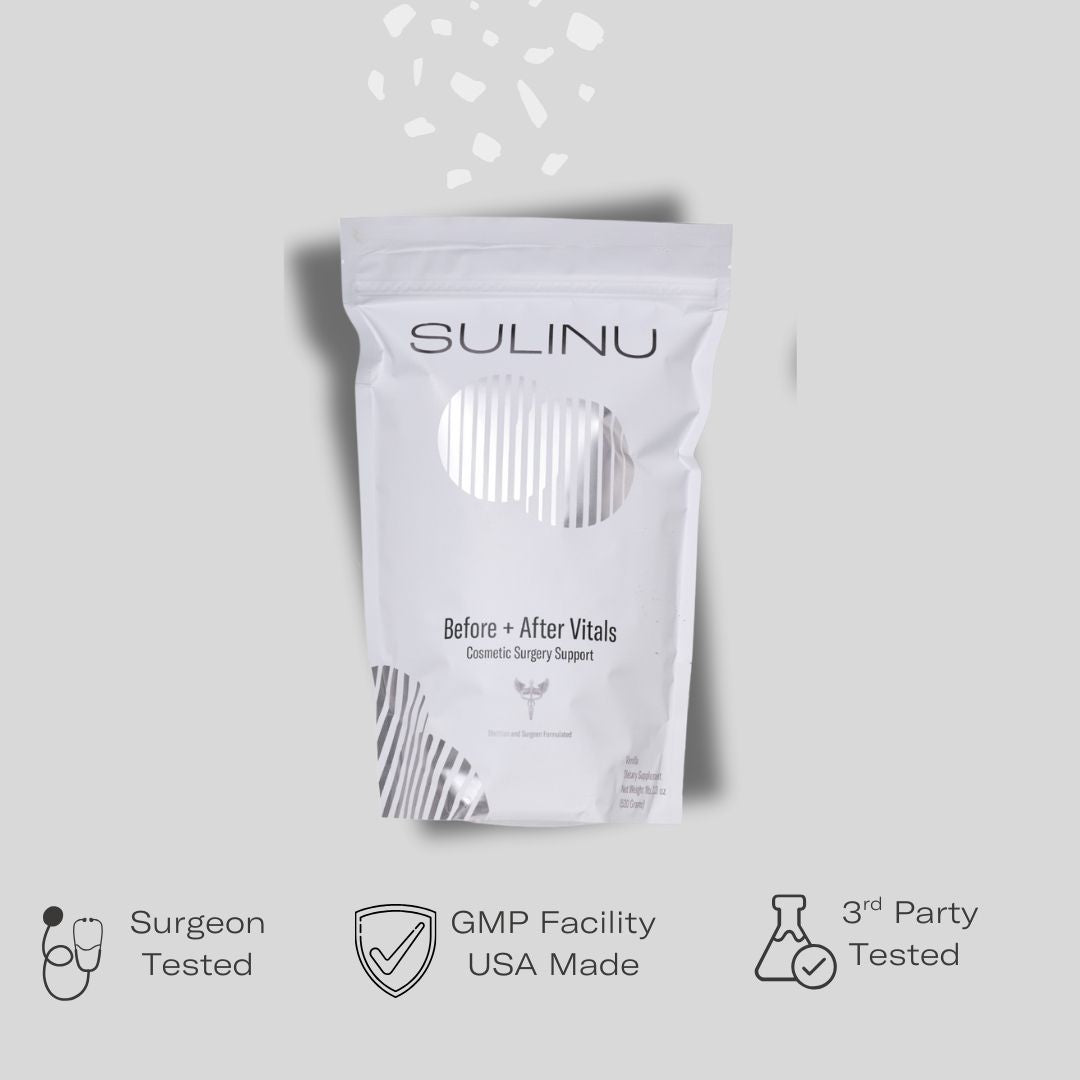
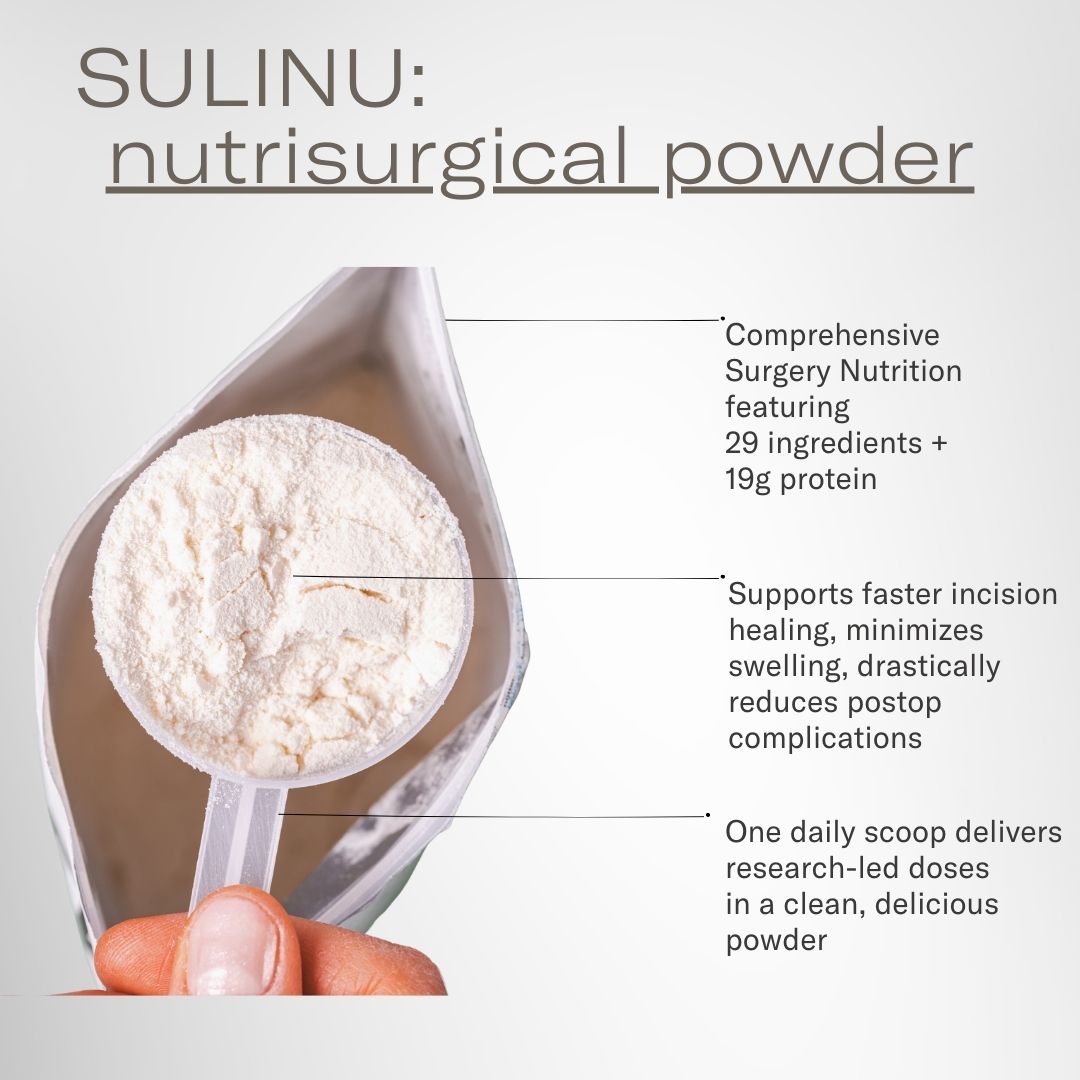
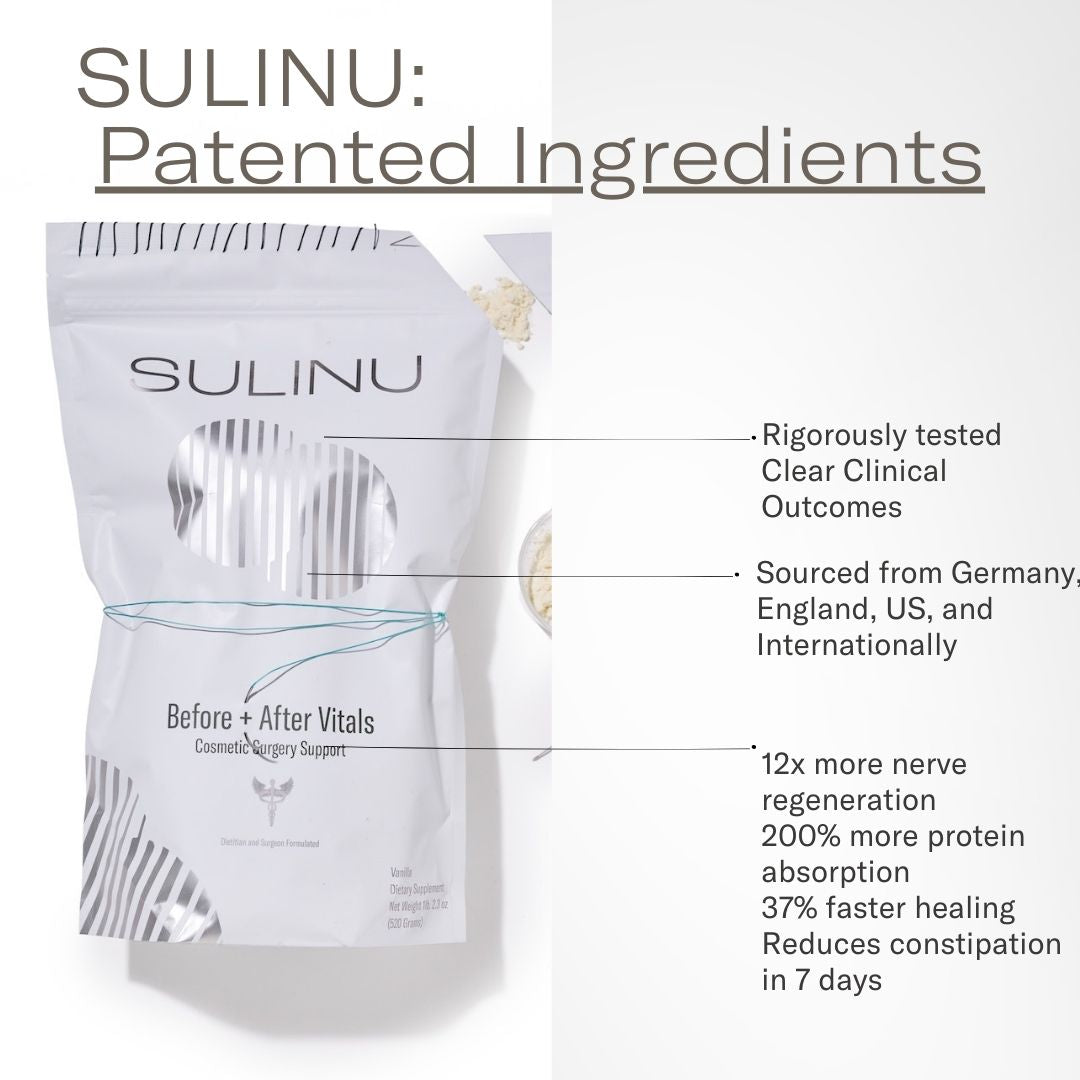
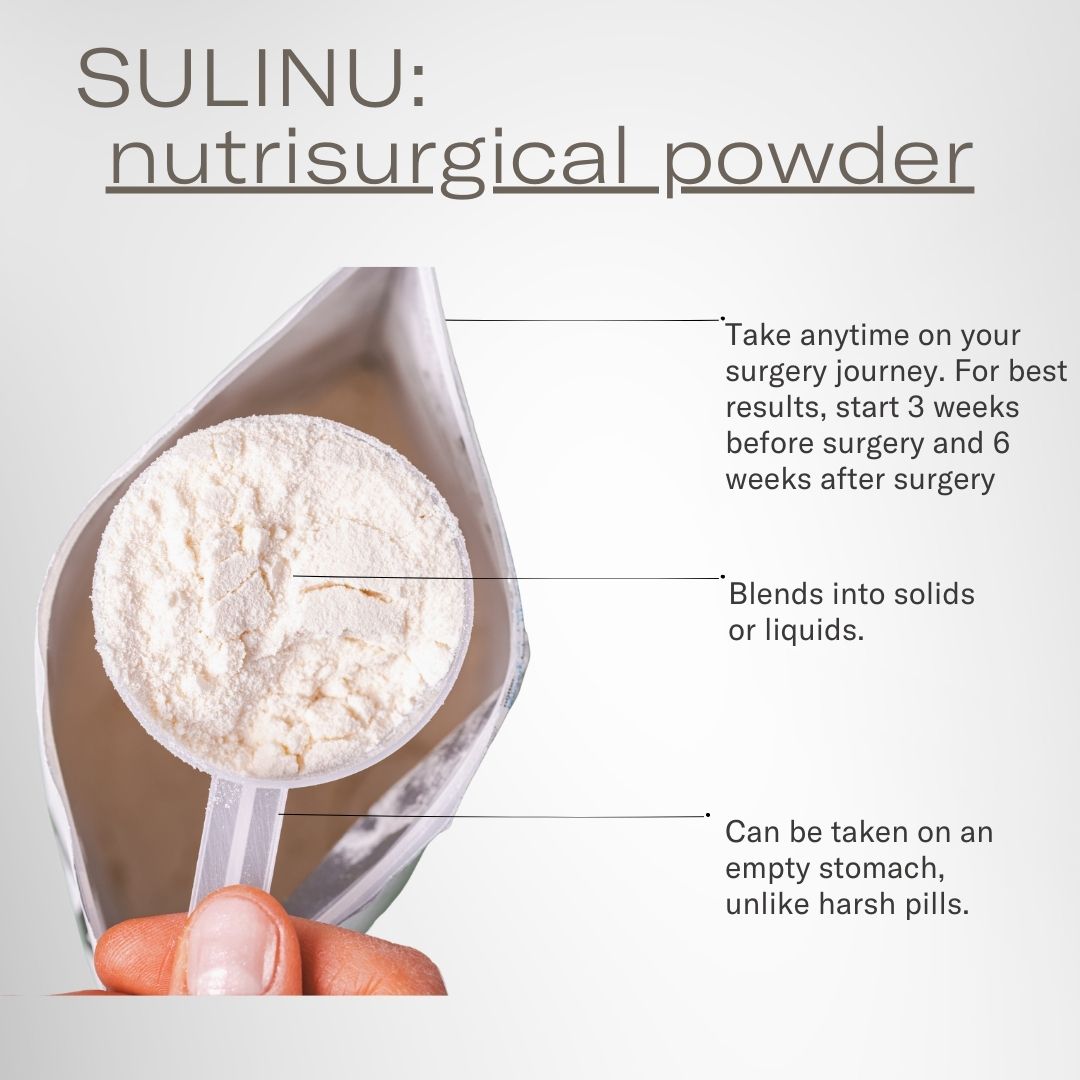
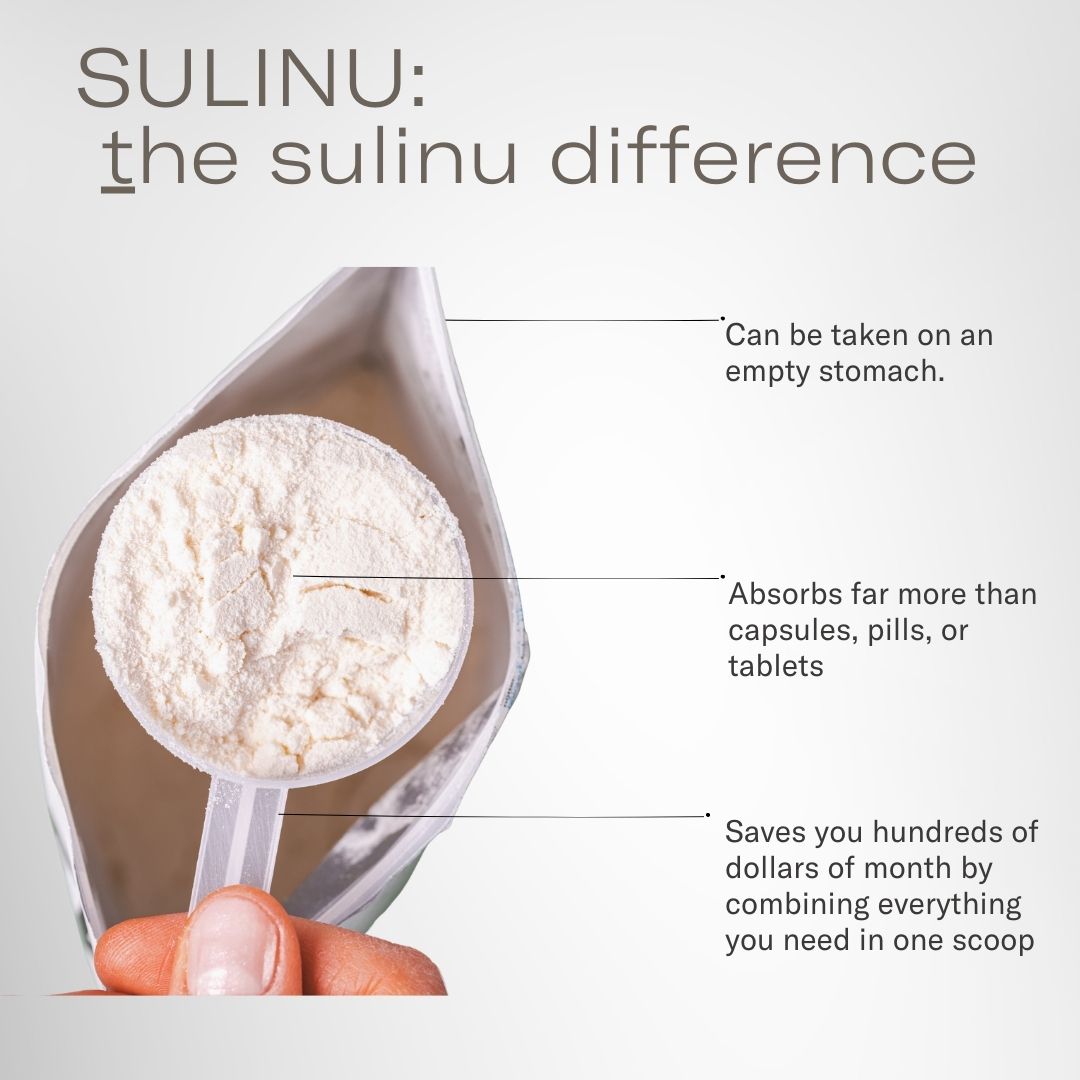
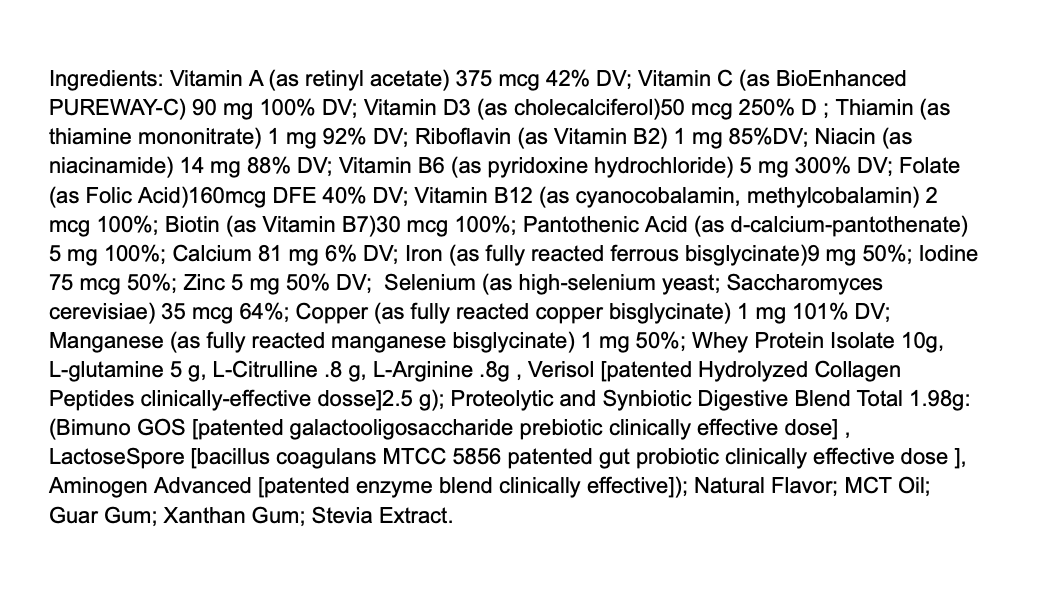
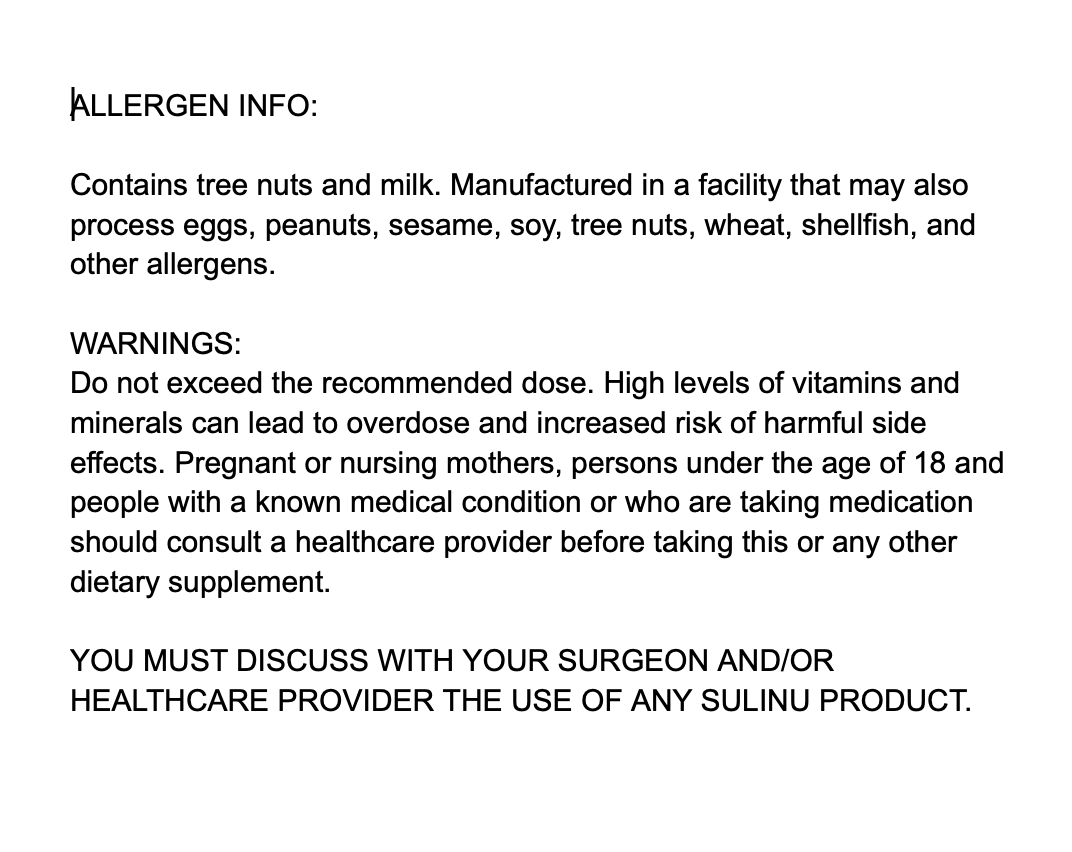
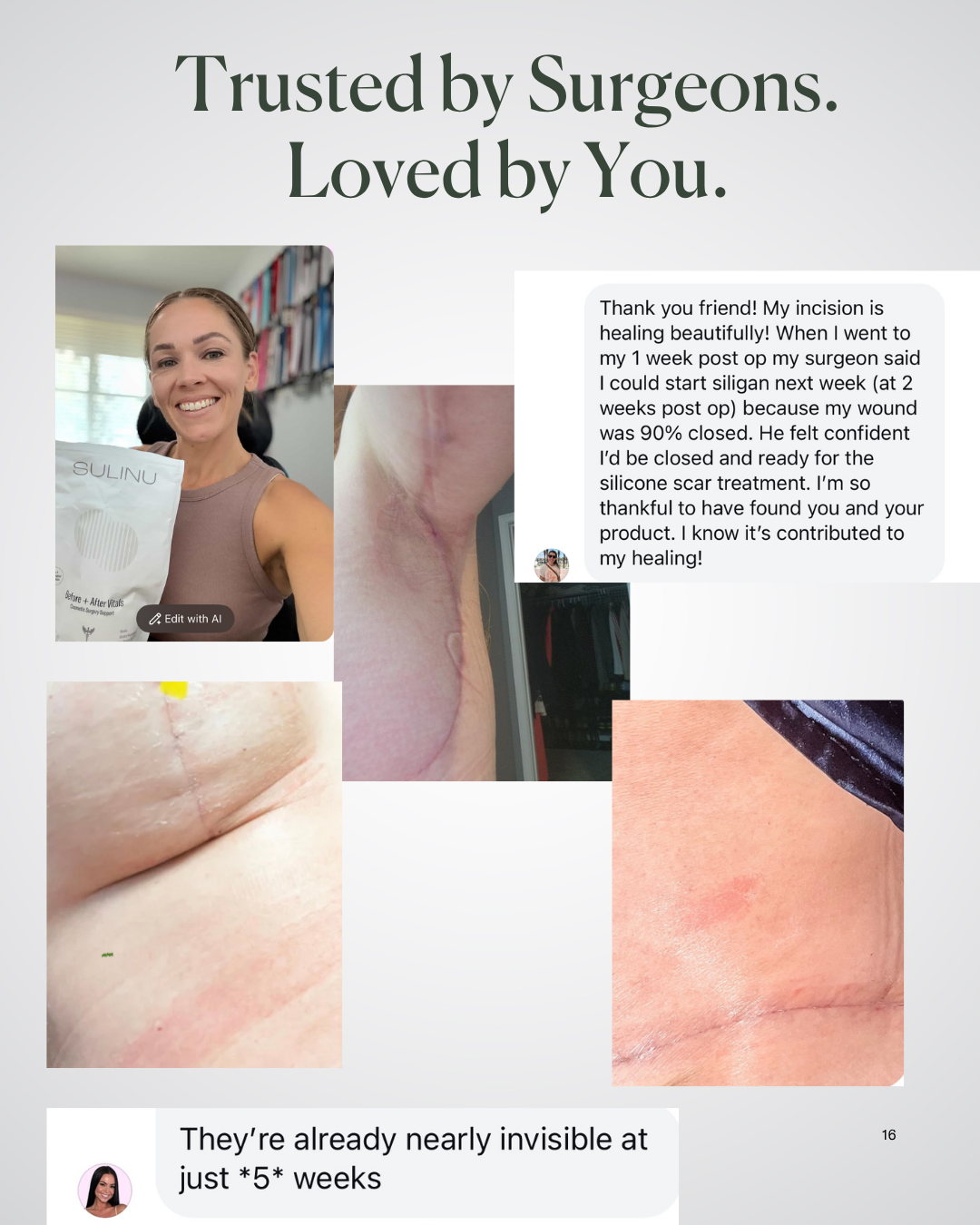
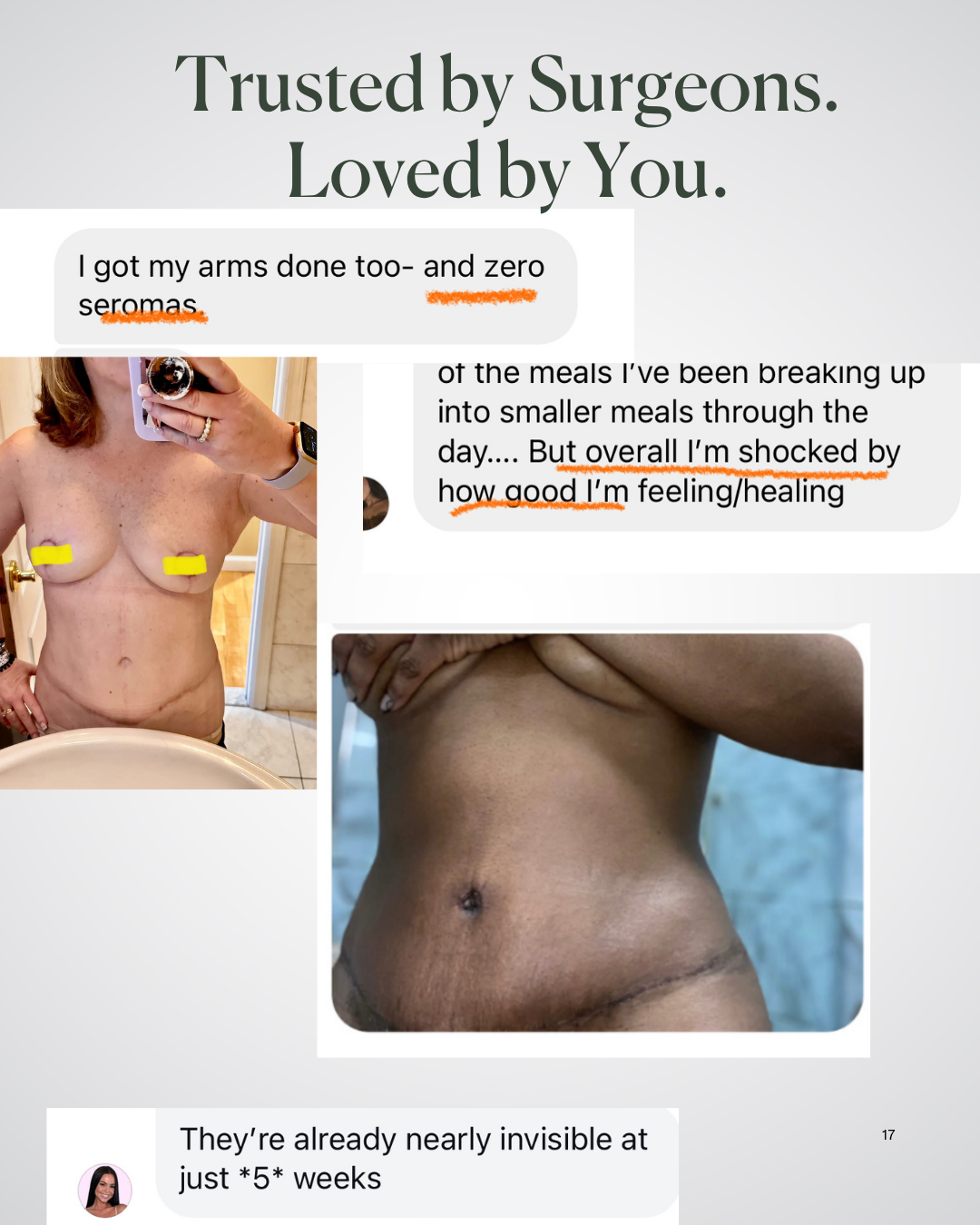
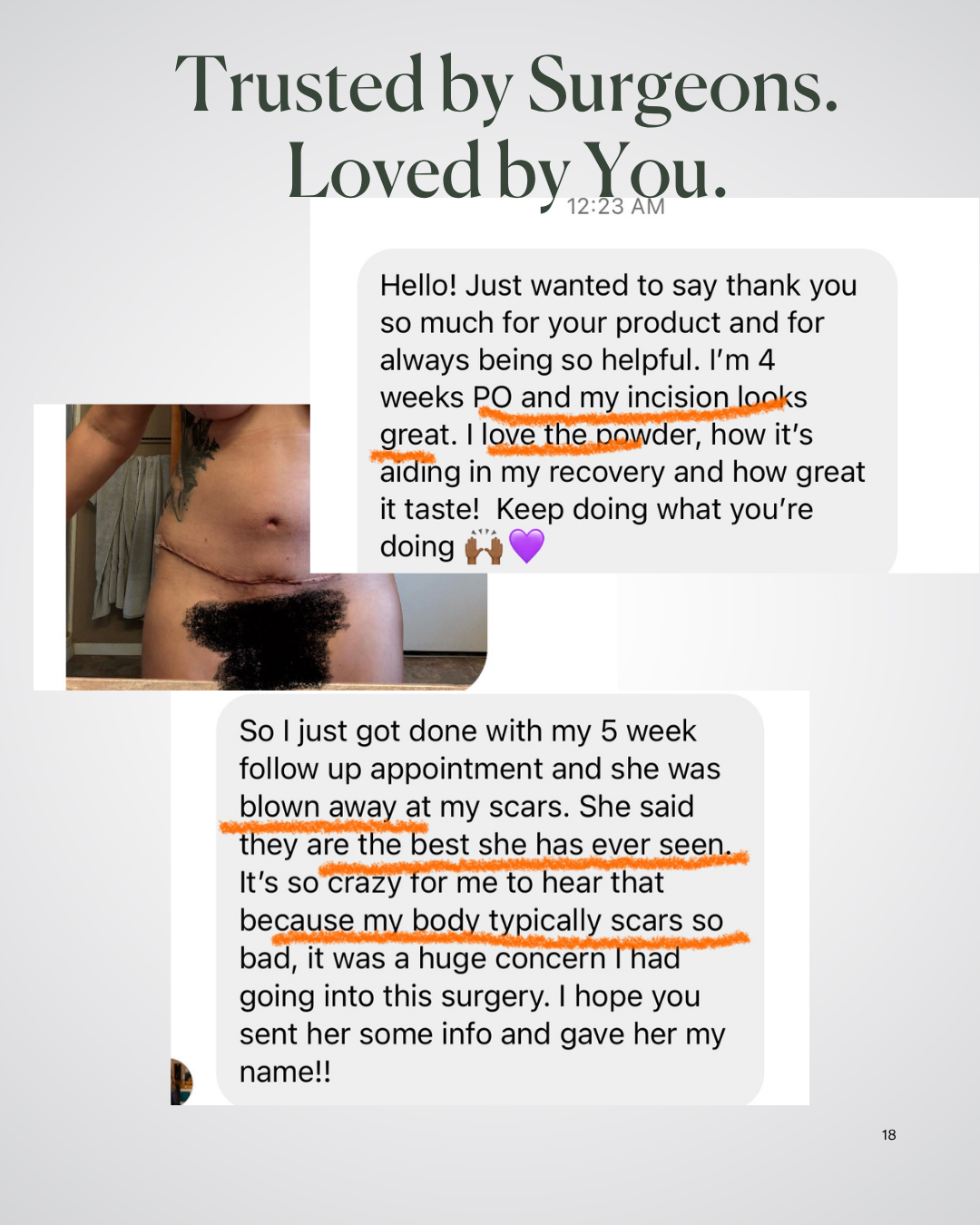
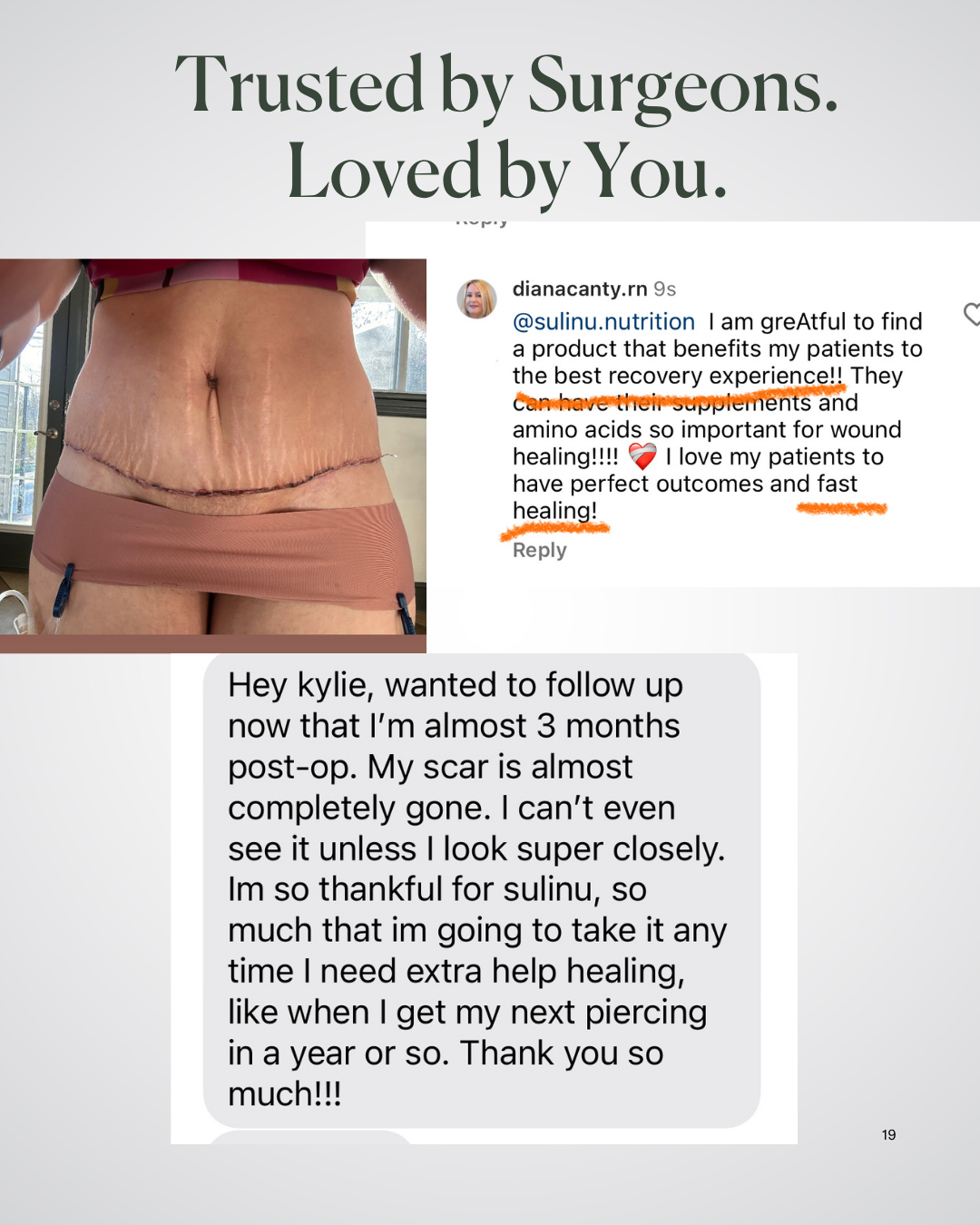
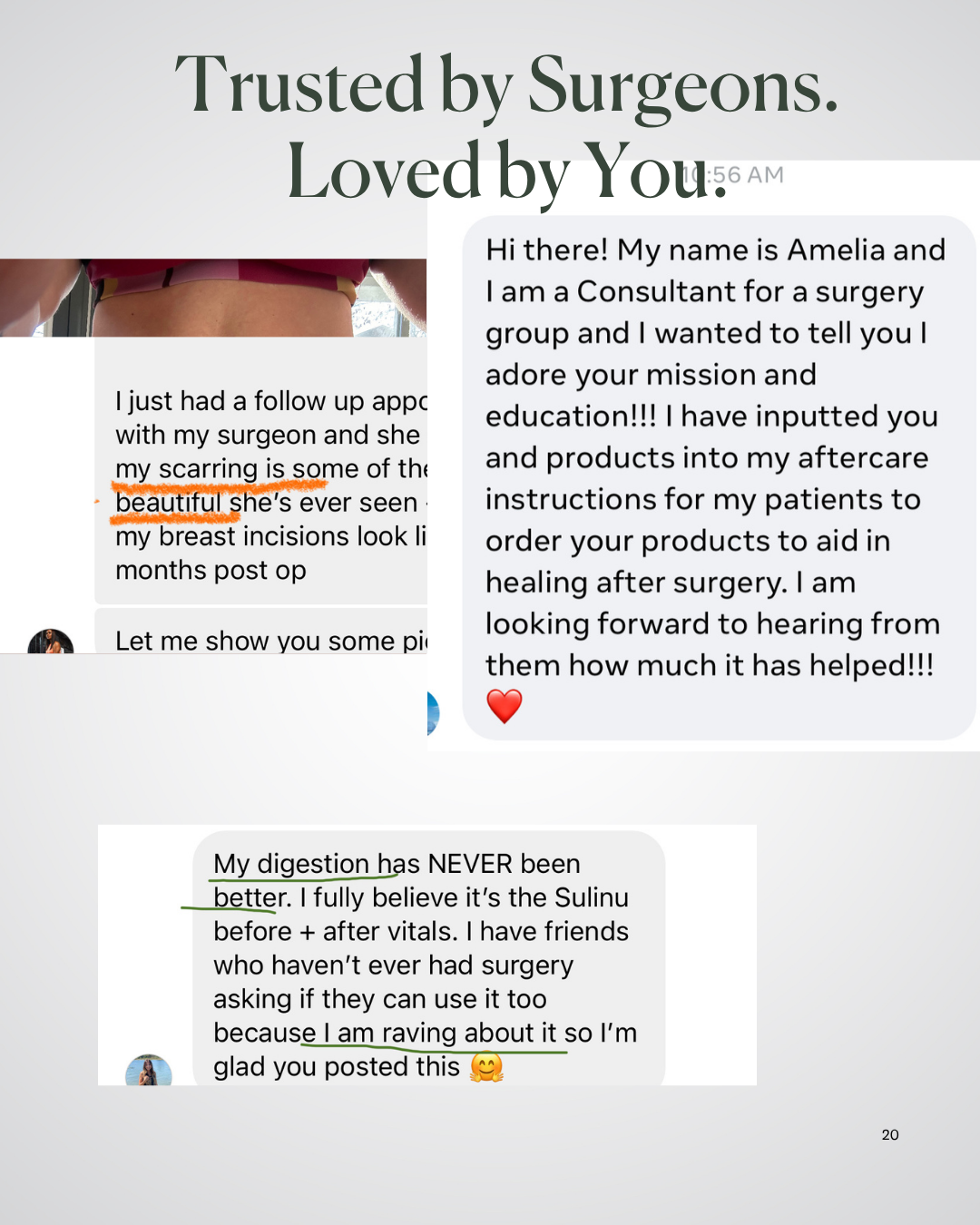

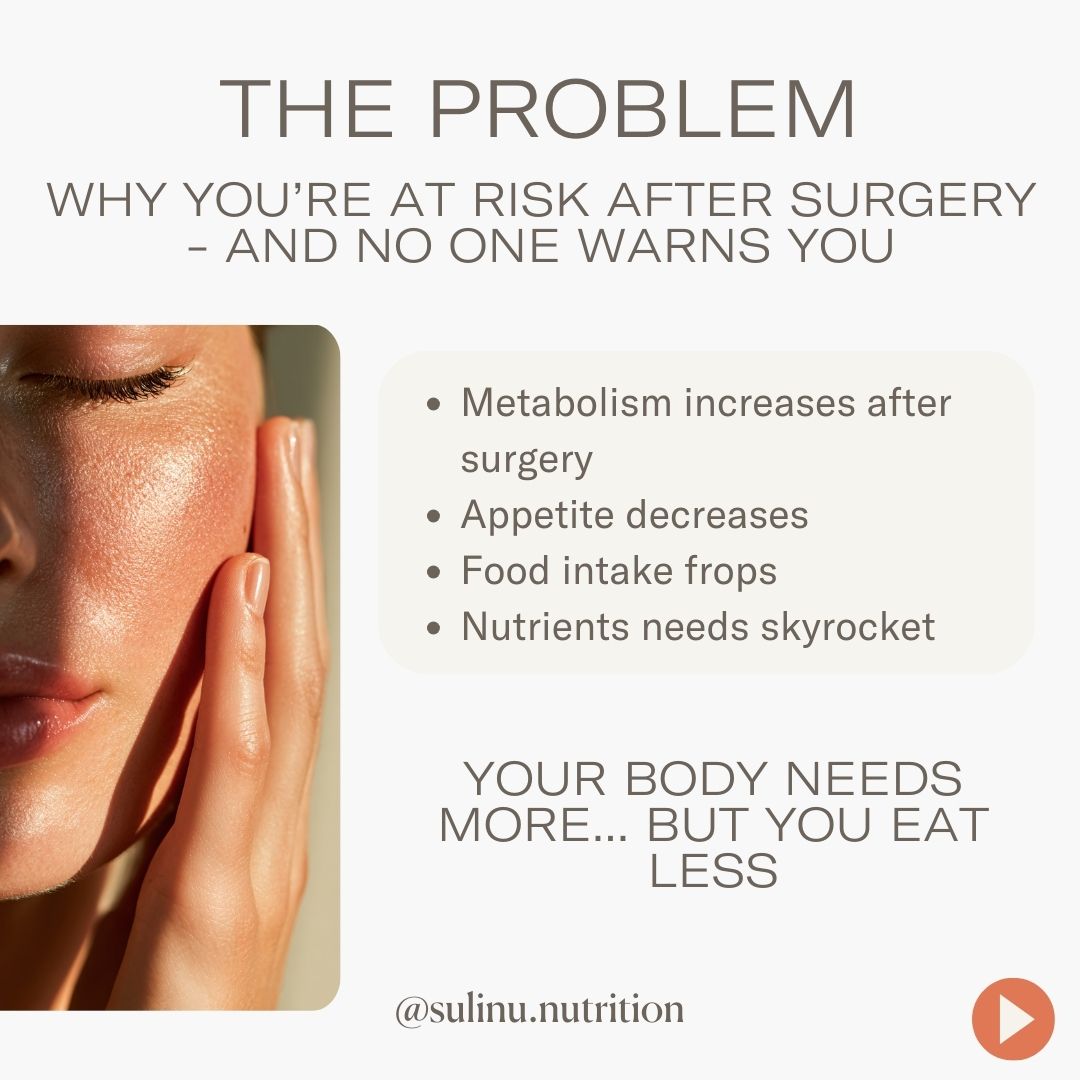
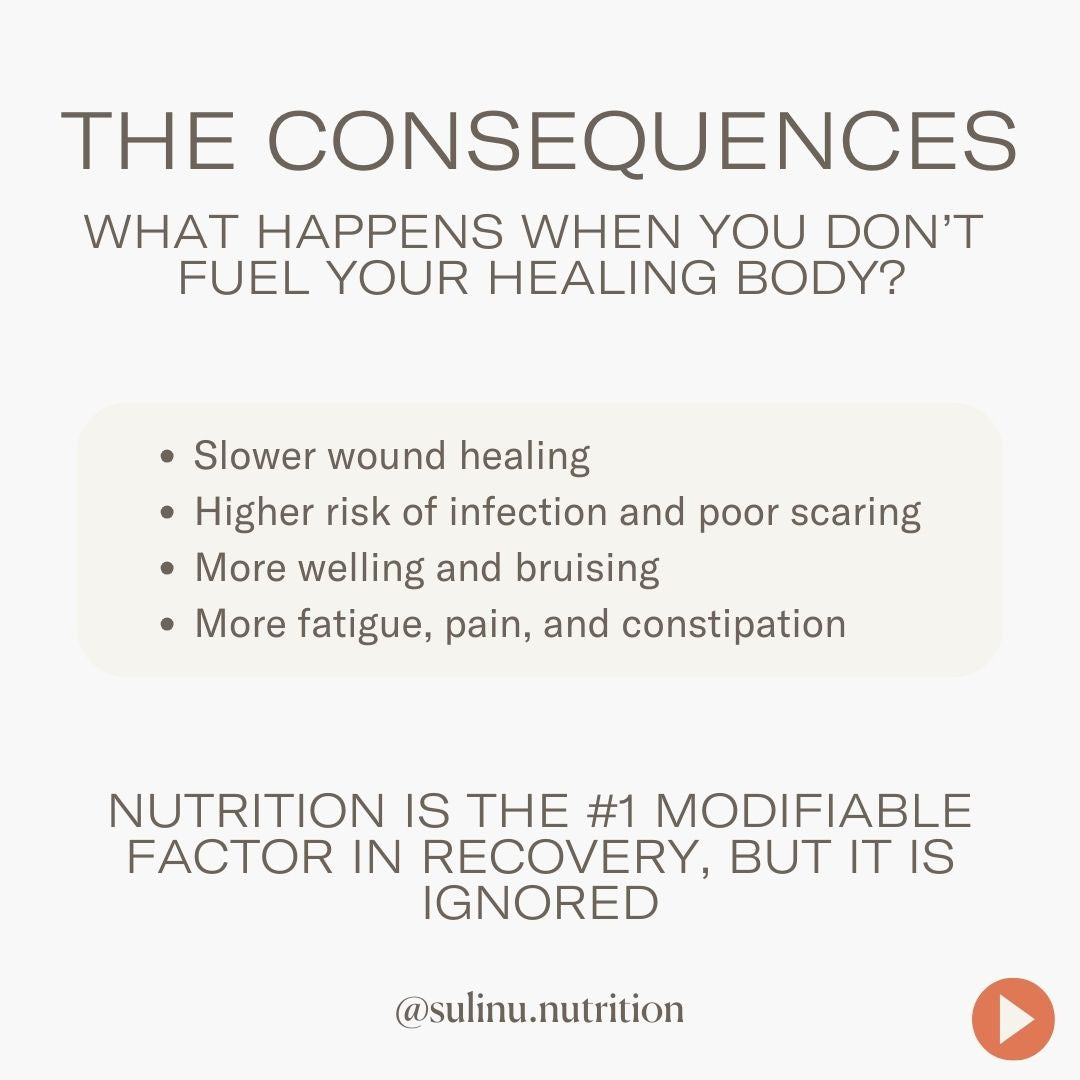
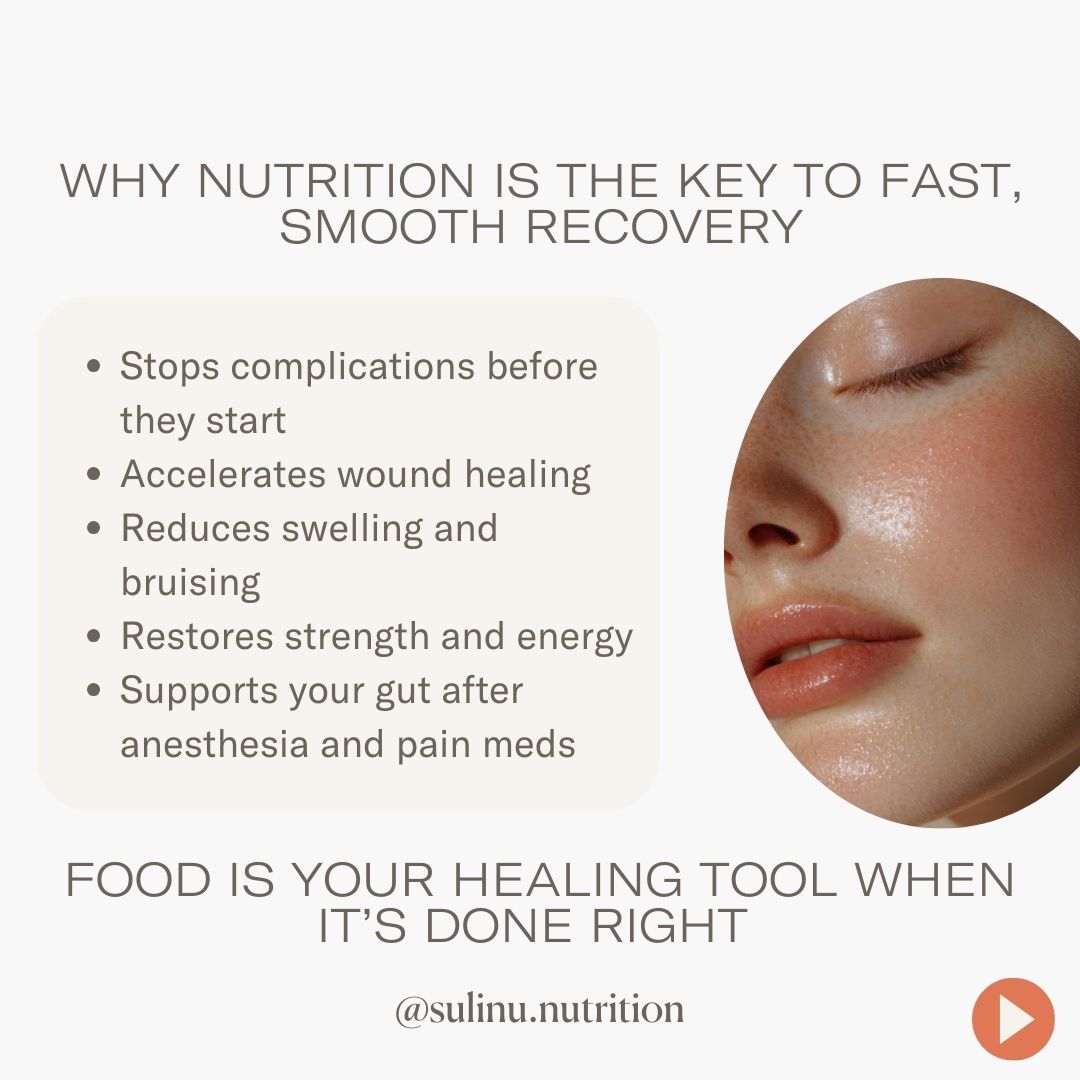
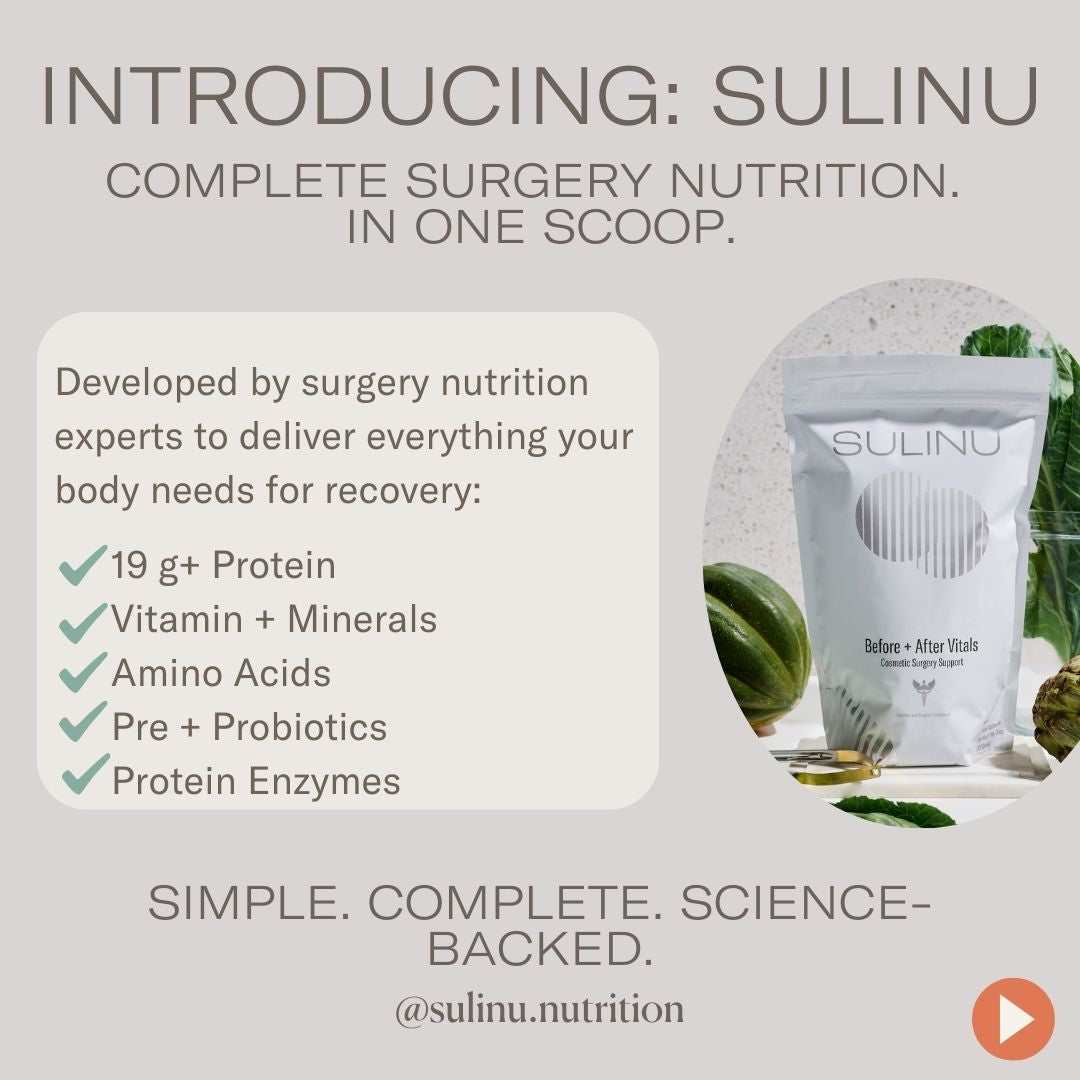
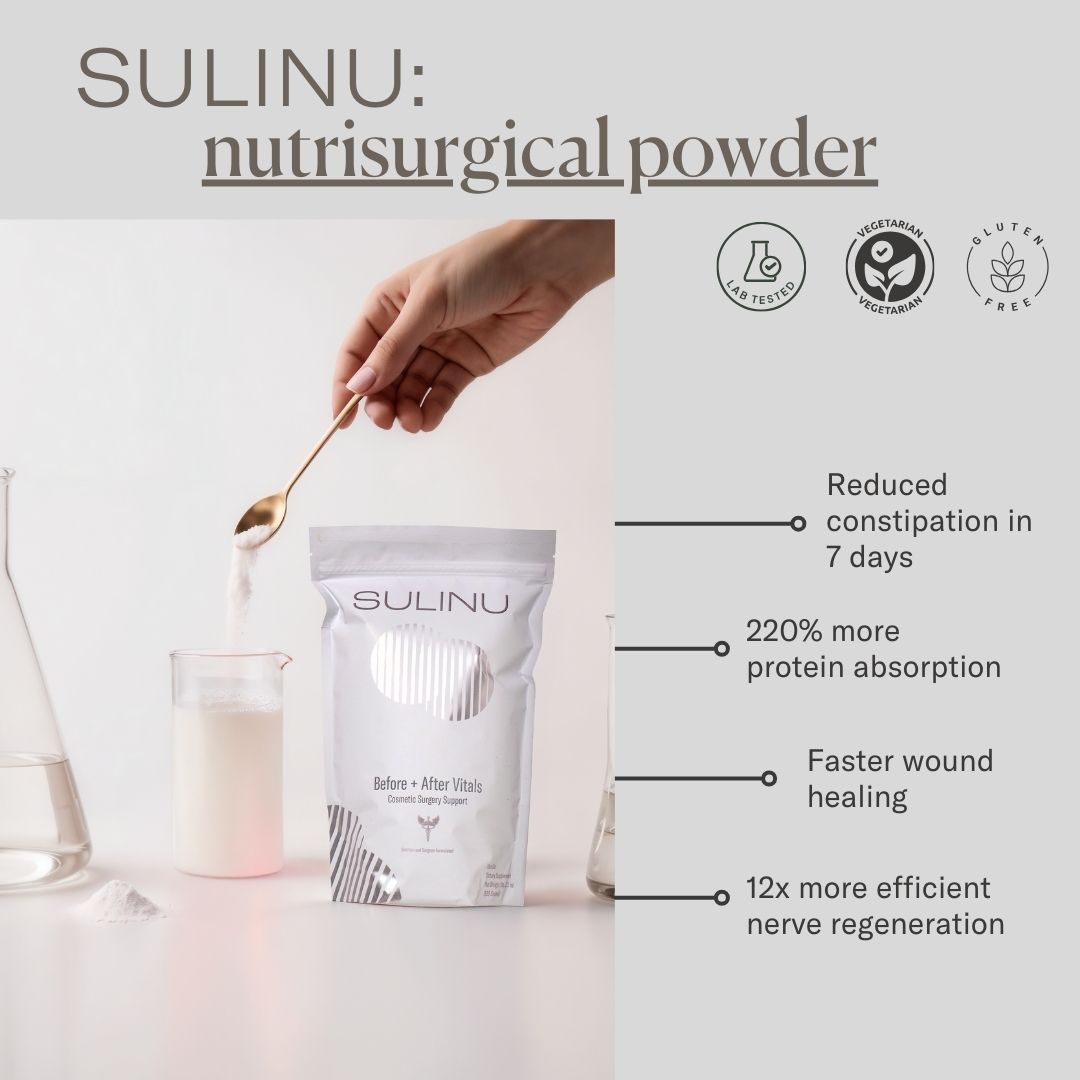
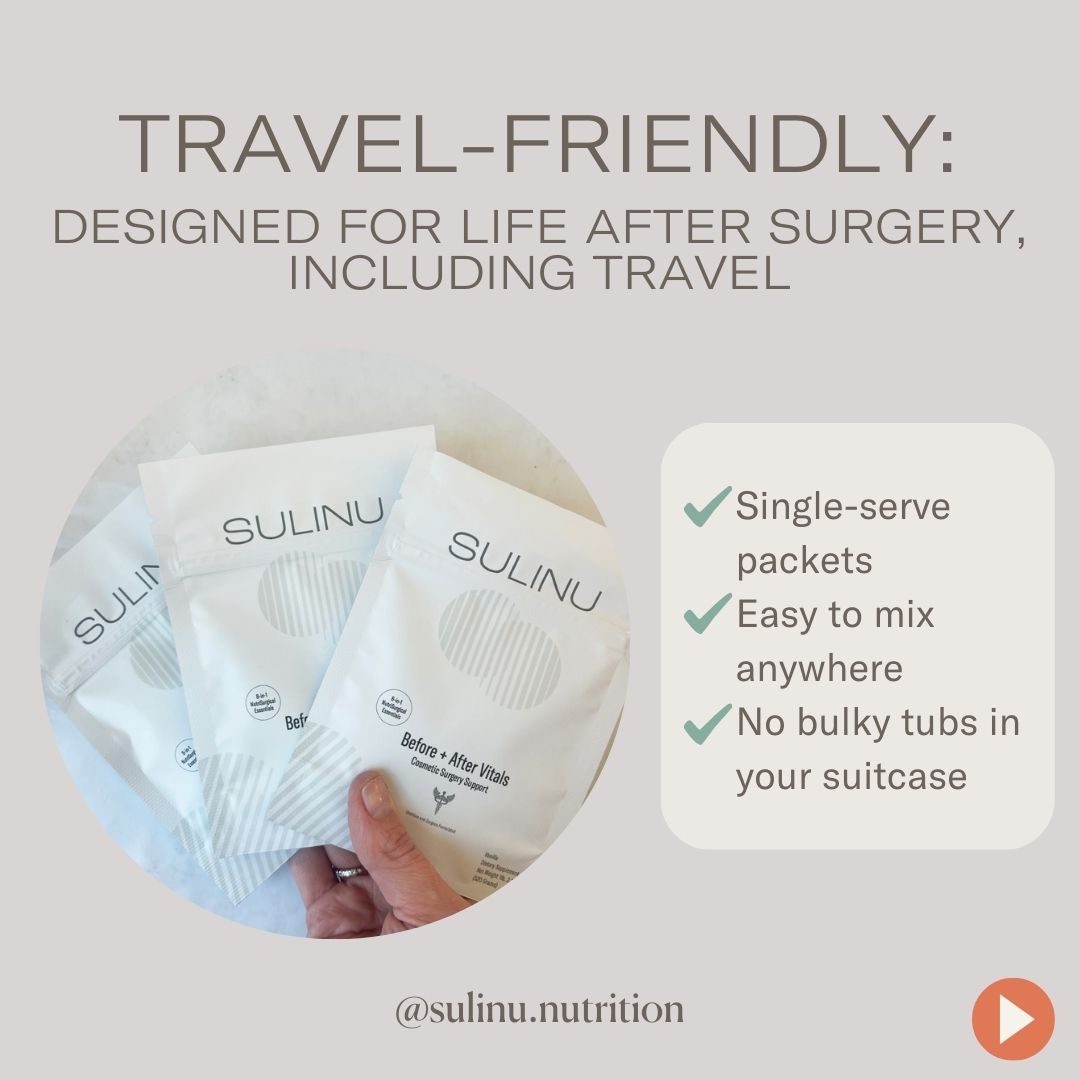
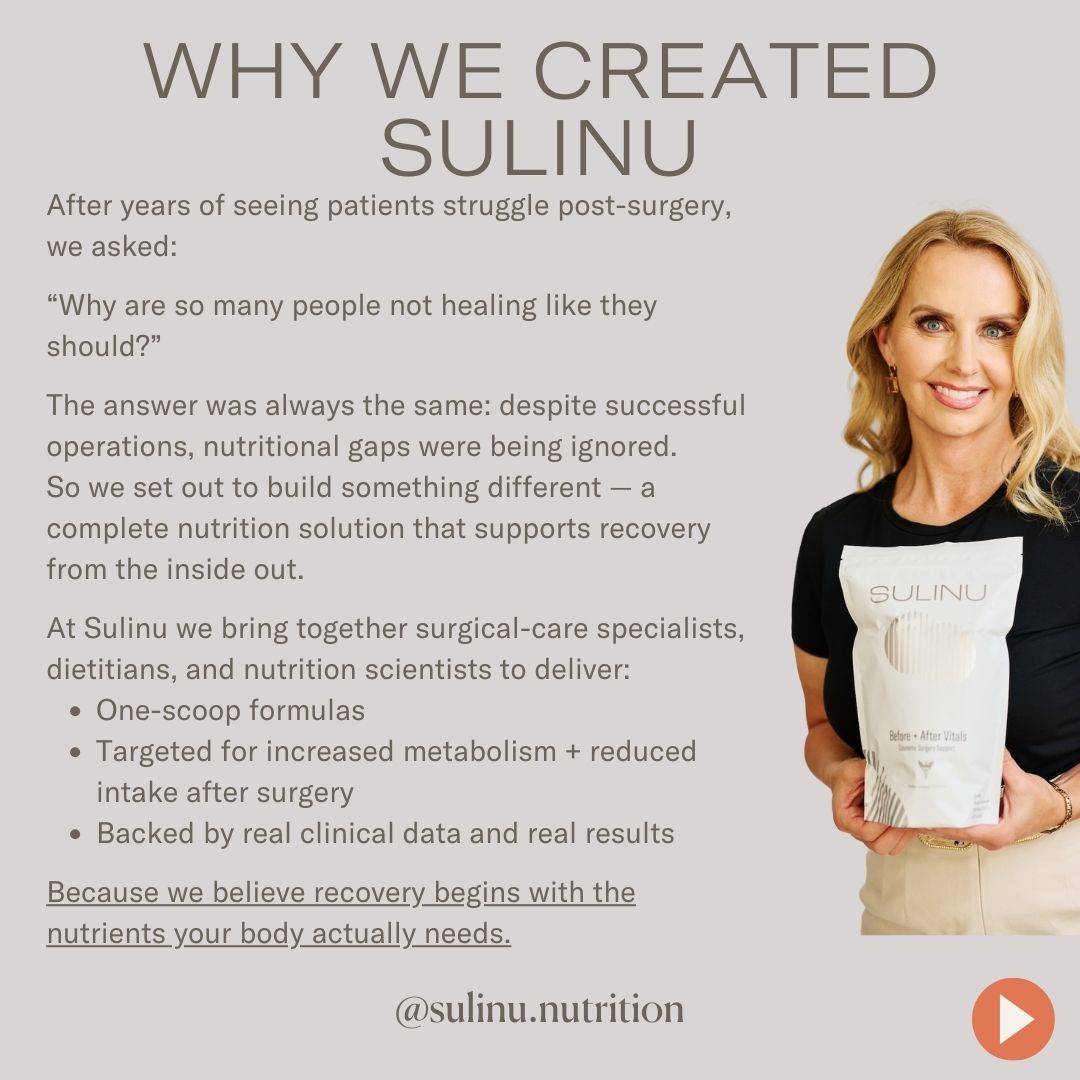
NUTRISURGICAL VITAMIN POWDER -(bag: Vanilla)
**FREE SHIPPING for orders over $125!!**
- 100% Money Back Guarantee
- Discreet Shipping-Your privacy is important
- We recommend 3 bags for any surgery for the best results
This Complete Surgery Powder gives you EVERYTHING you need IN ONE SCOOP.
Pre and Post Surgery Supplements for that near-invisible scar look.
"Can you believe it? [My incision scars] are nearly invisible at just 5 weeks!" -Jessie
Our pre and post surgery supplements are packed with vitamins for wound healing after surgery
- 3rd party tested
- Gluten-Free
- Vegetarian Whey
-
27 Surgeon-Approved Ingredients
- At therapeutic, effective dosages
- In bioavailable forms
-
5 Patented Ingredients
- Patented is the HIGHEST standard of ingredients
- Faster Incision healing
- Gut microbiome studied
- Clinically tested
- Sourced from Europe and Internationally
- Therapeutic Dosages
Perfect for:
- Before Cosmetic Surgery
- After Cosmetic Surgery
- Slow-to-heal incisions or wounds
- Using a GLP and needing extra nutrition
- Can begin taking at anytime on your surgery journey, EVEN if you are weeks after your surgery! Your scar is healing for a least a year after your surgery date.
How to use:
- Use 1/2 to 1 scoop a day. Max 1 scoop a day for at least 6 weeks postop.
- We recommend 3 bags: Use 1 bag before surgery and 2 bags after surgery
Nutrisurgical Vitamin Powder with Patented, Clinically-tested Ingredients.
All your Protein, Collagen, Amino Acids, MicroNutrients, Synbiotics and Enzymes in ONE SCOOP to give you a seamless recovery after cosmetic surgery.
Note: This product is also commonly used by GLP (Ozempic, Semiglutide, etc) patients to prevent nutrient depletion and Ozempic face
Our Survey Results*:
79% reported a beautiful incision
85% reported a faster recovery
90% liked the taste
X Gluten X Soy X Artificial Colors or Flavors X GMOs
*based upon our postop survey 2024
Introducing BEFORE + AFTER VITALS, the ultimate surgeon-endorsed nutritional supplement tailored exclusively for plastic surgery recovery.
Fears of infection, inflammation, slow-to-heal incisions, and bruising are taken head-on by this super fine, quick-to-dissolve powdered supplement. Add a delicious hit of vanilla flavor to your cold or warm drinks, smoothies, or culinary creations.
1 pouch is 20 servings.
ALLERGY info: Contains lactose. Product was processed in a facility that may also process eggs, peanuts, sesame, soy, tree nuts, shellfish, and other allergens.
